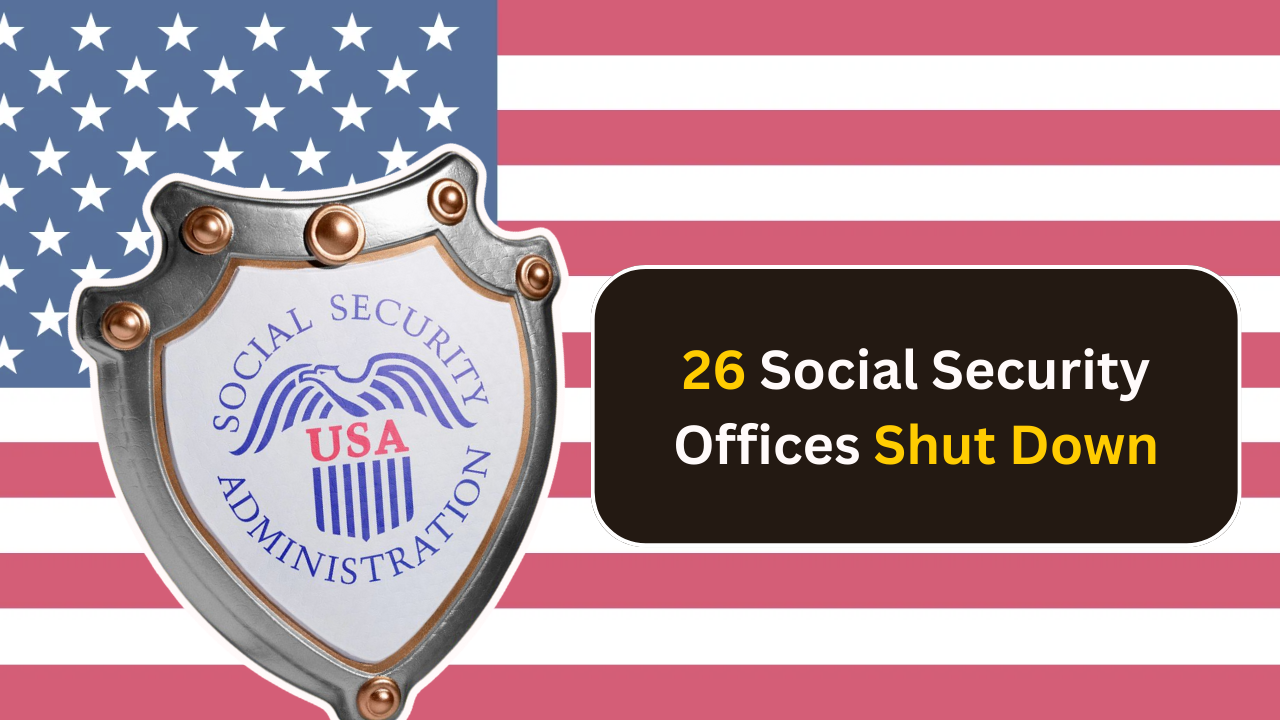In 2025, 26 Social Security offices across the United States will be closing their doors. This decision has raised concerns about the future of Social Security services, especially for those who rely on in-person assistance.
But what does this mean for you, and could your local branch be affected? In this article, we’ll explore the closures, what’s behind them, and how you can continue to access Social Security services after the closures take place.
Why Are Social Security Offices Closing?
The closures of these 26 Social Security offices are part of a broader effort by the Social Security Administration (SSA) to streamline services and reduce operational costs.
With the increasing availability of online services and growing technological advancements, the SSA has been shifting its focus toward digital platforms.
In recent years, the SSA has encouraged beneficiaries to use their online accounts for tasks like applying for benefits, checking the status of their claims, and even scheduling appointments.
As a result, foot traffic to local offices has decreased, prompting the administration to consider which offices are underutilized and could be consolidated or closed.
Additionally, ongoing budget constraints and the need to cut costs are significant factors in these closures. The SSA has been facing budget cuts over the years, which have made it harder to maintain and operate physical office spaces.
With the increasing number of people opting for digital services, many offices that previously saw high volumes of visitors are now seeing fewer clients in person.
Which Offices Are Closing?
The Social Security Administration has not released the full list of the 26 affected offices yet, but several states have already been impacted by this decision.
The closures are expected to affect smaller, rural, and less-frequented offices, while larger urban centers will likely remain open. However, it’s essential to stay updated on the official announcements to find out if your local office is included in the list.
Some of the states that could experience closures include:
- California: With its large population, California has several Social Security offices that may see changes, especially in smaller towns.
- Texas: As a state with significant geographic size, certain rural areas could be affected by the closures.
- Florida: Like California and Texas, Florida has many Social Security offices spread across the state, and some of them could be closed.
- New York: The closure of smaller offices in New York could impact suburban areas, while major cities are expected to remain unaffected.
How Will This Affect Beneficiaries?

The closure of these 26 offices could have significant implications for Social Security beneficiaries, particularly those who rely on in-person services. For elderly individuals or those with disabilities, the move to online services might not be convenient or feasible.
For people who are unfamiliar with using digital platforms, the closures could lead to frustration or delays in service.
Beneficiaries who don’t have easy access to the internet or a computer may face difficulties in scheduling appointments or managing their benefits online. In addition, individuals who prefer speaking to a representative face-to-face might find the transition to phone calls or online chats impersonal.
However, the SSA is aware of these concerns and is working to mitigate the impact of the closures. For example, the SSA has partnered with community organizations in some areas to assist individuals who need help navigating online services.
There are also plans to increase the availability of mobile units and community outreach programs to ensure people can still access essential services without having to travel long distances.
What Are Your Options?
If your local Social Security office is closing, there are several ways you can continue to access services:
- Use Online Services: The SSA has made significant improvements to its online platform, allowing you to apply for benefits, check the status of your claims, and manage your account from the comfort of your home. You can create a free account on the SSA’s website to access these services.
- Call the SSA: For issues that require personal assistance, the SSA offers customer service via phone. You can call their toll-free number at 1-800-772-1213 to speak with a representative and get assistance with your queries. Be prepared for longer wait times during peak hours.
- Visit a Nearby Office: If your local office is closing, it’s possible that the SSA may direct you to another nearby branch. Larger cities are less likely to be impacted by these closures, so check to see if there is an alternative office near you.
- Community Outreach Programs: In some areas, the SSA has partnered with local organizations to provide in-person help. These programs can assist you with applying for benefits or answering questions about your account.
- Use Mobile Services: In certain regions, the SSA is launching mobile units to help individuals access services without having to travel to a permanent office. Keep an eye on local news or the SSA website to see if mobile services are available in your area.
How Can You Prepare?
If you’re concerned about your local Social Security office closing, it’s important to stay informed. Here are a few steps you can take to prepare:
- Check the SSA Website: Regularly visit the SSA’s website to stay updated on the list of closed offices. They often announce closures ahead of time, so you can make necessary adjustments.
- Set Up Your Online Account: If you haven’t already, create an online account with the SSA. This will allow you to handle most of your Social Security needs digitally, including applying for benefits, checking the status of your claims, and more.
- Ask About Alternatives: If your office is closing, ask the SSA about other ways to access services, including nearby offices or outreach programs.
- Be Patient: While the transition to online services might take some getting used to, the SSA is making efforts to ensure that the process is as smooth as possible. Be patient and reach out for help when needed.
Conclusion
The closure of 26 Social Security offices in 2025 marks a significant shift in how services are delivered. While these changes are driven by the need for cost reductions and a growing reliance on digital services, they could pose challenges for individuals who depend on in-person assistance.
It’s essential to stay informed about the closures, explore alternative ways to access services, and take advantage of the resources the SSA provides to ease the transition. By preparing now, you can continue to access the benefits and services you need without disruption.



